Earlier this month, CBA economist Harry Ottley published the below chart showing how the rate of rental growth is highly correlated to the change in population growth relative to apartment construction:
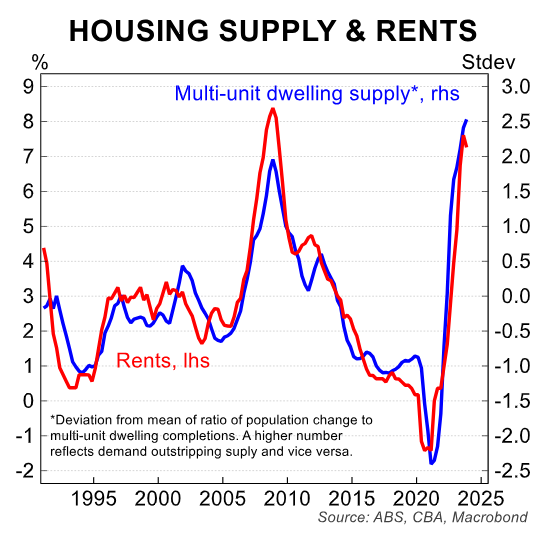
The above chart should send shudders down the spines of Australian renters, given that population growth is expanding at a historically strong pace at the same time as apartment construction is forecast to collapse.
The following chart plots Australian Bureau of Statistics (ABS) data and shows that approvals for the construction of new apartments have fallen to the lowest level since February 2012:
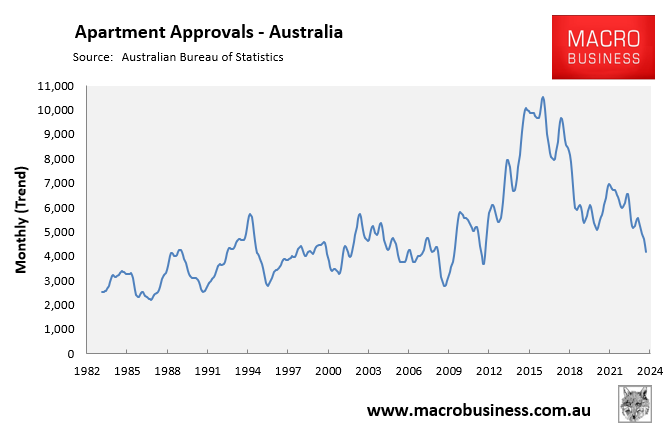
Annual high-rise apartment approvals were down 59% from their peak in February 2024, while low-rise units were 86% lower:
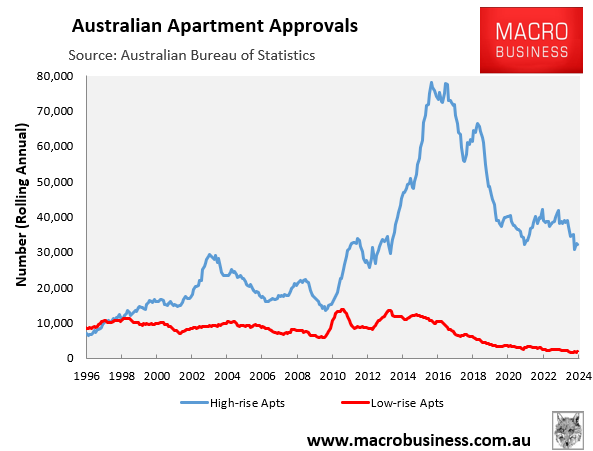
The outlook for apartment construction is unlikely to improve any time soon.
The following chart from Justin Fabo at Antipodean Macro shows that output price inflation for new higher-density homes has run faster than new houses recently:
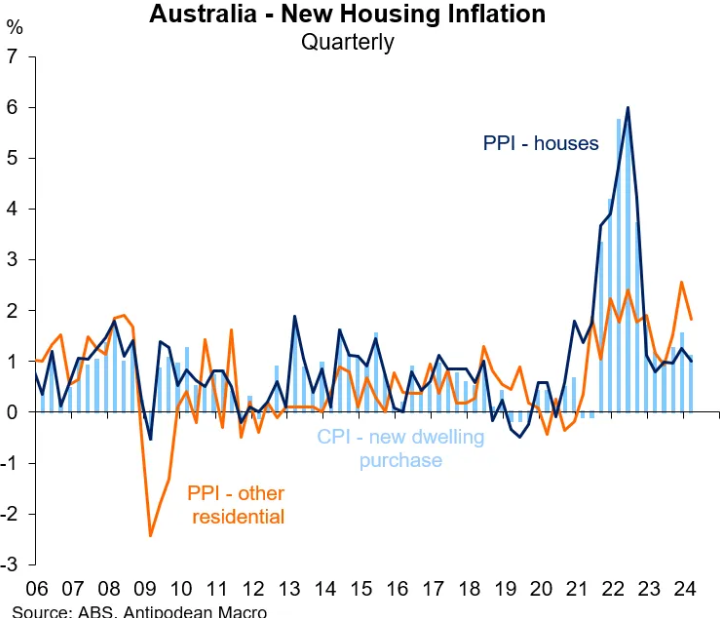
Moreover, output prices in home building in Australia have been rising faster than the cost of materials. This partly reflects the fact that labour costs have been rising quickly:
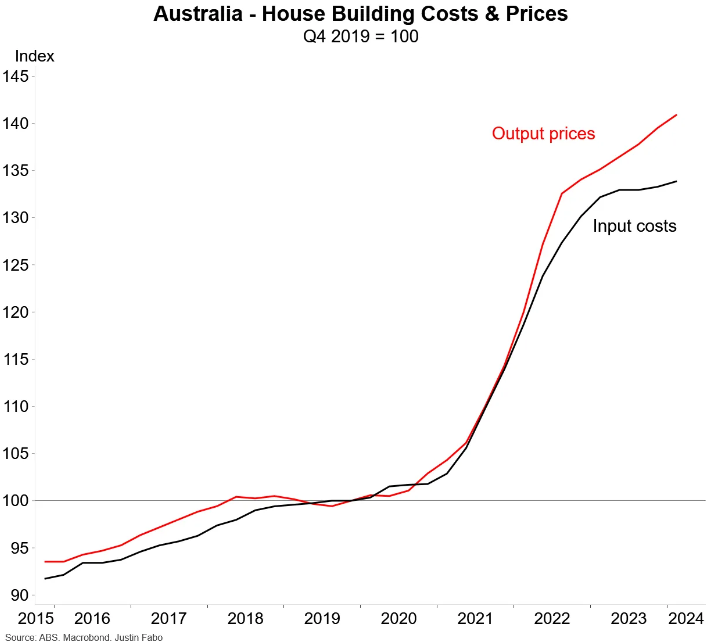
As you can see, home building costs have risen by around 40% since the beginning of the pandemic, according to the ABS’ latest producer price indices.
With Australia’s population growth expected to be historically high for the foreseeable future, the rental crisis will inevitably worsen as demand continues to run ahead of supply.
Australia’s rental vacancy rates will remain at historically low levels:
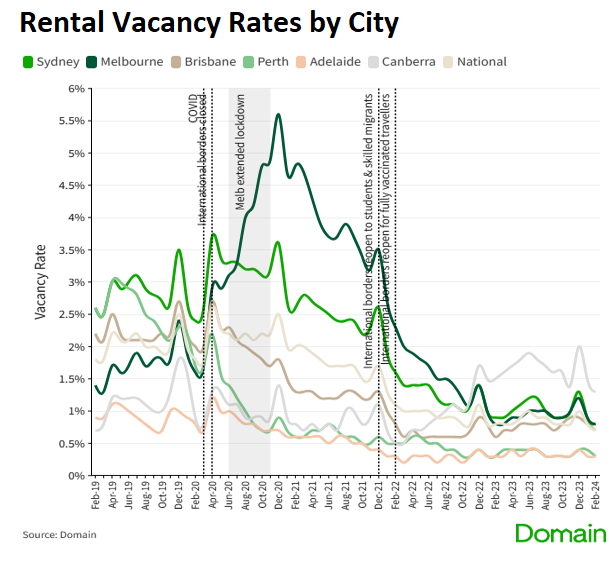
Rental inflation will also run well ahead of income growth, creating more financial pain for tenants and forcing more people into shared housing or homelessness.
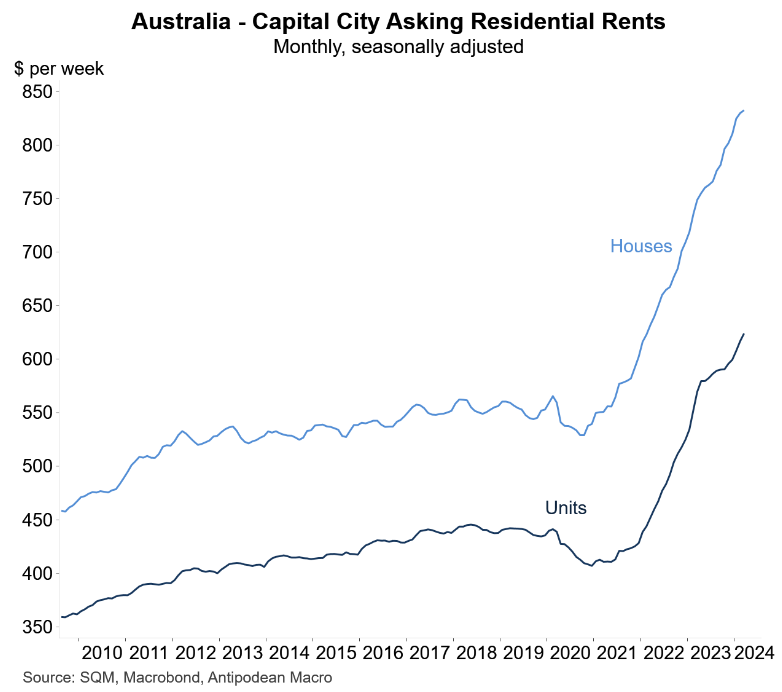
The only genuine solution to this mess is to significantly cut net overseas migration so that Australia’s population grows at a slower pace than the nation’s capacity to supply housing and infrastructure.
Otherwise, the rental crisis will drag on.

